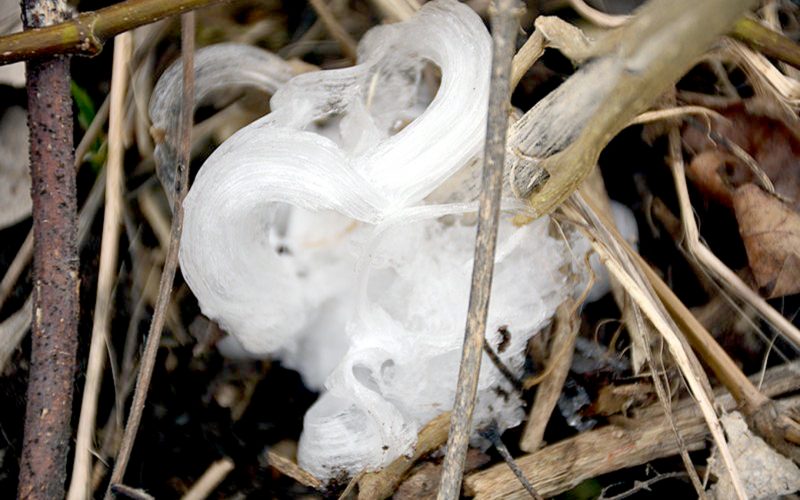
Staff Photo Amanda Bancroft A frozen frost flower taken in January this year, near Fayetteville.
The turning of the year comes ‘round again, and winter officially begins at 4:44 a.m. central time on Dec. 21. It’s the start of the season of wintery delights (or frights, depending on your disposition). While most people are celebrating at least one holiday, whether secular or religious, the earth is subtly celebrating the solstice. And some people are joining in, from a religious or secular perspective. For followers of earth-based spirituality, the spring equinox, summer solstice, fall equinox, and winter solstice are important times of year and many gather for rituals. For followers of nature minus deities, it’s also a key time to reflect and observe the ever-changing wonders of our planet.
The winter solstice brings the shortest day of the year, when the sun is at its lowest point in the sky at noon. Astronomical details may be a bit puzzling, but essentially, the changing of the seasons is directly tied to the length of day among other factors. Because of this, the signs of the solstice are all around us, not just out in space.
The Christmas Ferns are greening woodland slopes, the skunks and snakes are partially hibernating, and the black bears are in their winter dens. For reasons known only to them, our local squirrels, foxes, and Great Horned Owls feel that the freezing weather of winter is the perfect time to mate. You can already hear the owls and foxes calling this month. Bursting forth just above the ground, we’ve witnessed the first frost flowers, gorgeous crystalline designs seeping from the stems of vascular plants. Despite occasional unseasonably warm days, the temperature outside is getting colder. People wrapped like burritos are now trekking along sidewalks shopping for the perfect gift.
Perhaps the most obvious sign of the season is the many cultural events that have arisen throughout the ages to be celebrated at or around the time of the solstice, when things look darkest and candlelight offers hope for the return of the sun. These include Kwanzaa, Hanukkah, Yule, Christmas, Chalica, Korochun/Koliada, and Saturnalia. It’s amazing to learn how much of a society’s behavior is fueled by astrological events that sparked certain rituals which evolved over generations before taking their current form. All those holiday commercials exist essentially because ancient peoples figured out that the day got shorter, and marketers figured out how to capitalize on various human interpretations of nature’s routines.
Whatever you celebrate, and even if nothing is celebrated, may you have peace. The creatures are resting, the plants preparing, and the seasons changing. Through feast or famine, there is certainty that “the sun will return” and bring with it spring. So enjoy everything that winter has to offer while it lasts!
Amanda Bancroft is a writer, artist, and naturalist building an off-grid cottage for land conservation on Mt. Kessler. She and her husband Ryan blog about their adventures and offer a solar-hosted online educational center on how to make a difference with everyday choices at: www.RipplesBlog.org










